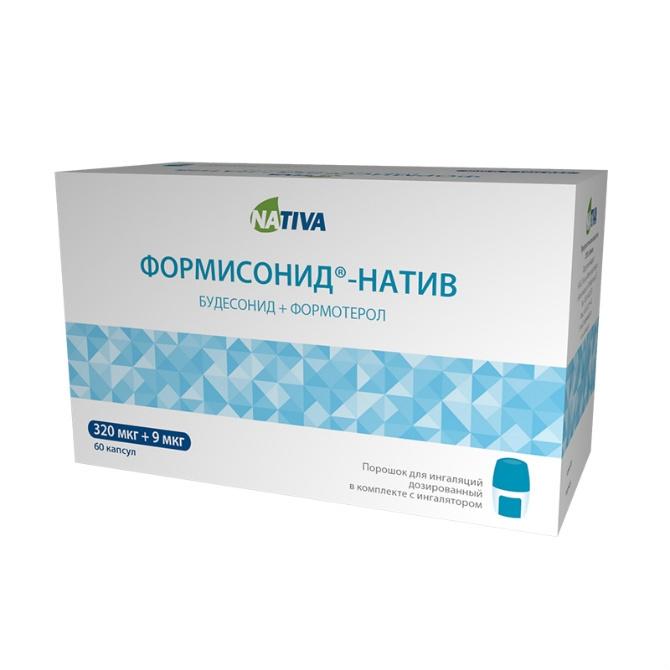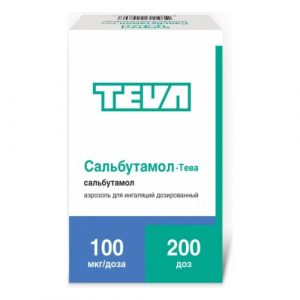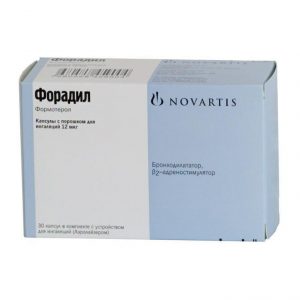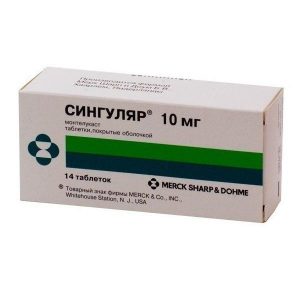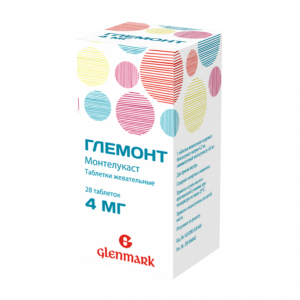Description
Latin name
Formisonid-nativ
Pharmacological action of
bronchodilating agent combined (beta2-adrenergic agonist selective + local glucocorticosteroid)
Indications
Prevention of bronchospasm caused by inhalation of allergens, cold air or exercise as an adjunct to inhaled glucocorticosteroid therapy.
Prevention and treatment of disorders of bronchial obstruction in patients with chronic obstructive pulmonary disease (COPD), in the presence of both reversible and irreversible bronchial obstruction, chronic bronchitis and emphysema.
Prevention and treatment of disorders of bronchial obstruction in patients with bronchial asthma (AD) as an adjunct to therapy with inhaled glucocorticosteroids.
Contraindications
Children under 6 years of age (for dosages 80 mcg + 4.5 mcg and 160 mcg + 4.5 mcg)
Children under 12 years of age (for dosages 320 mcg + 9 mcg)
Breastfeeding.
Hypersensitivity and / or intolerance to any of the components of the drug.
Rare hereditary diseases such as lactose intolerance, lactase deficiency or glucose-galactose malabsorption.
If you have one of the listed diseases, be sure to consult your doctor before using the drug. Extreme caution when using the drug Formoterol-native (especially from the point of view of dose reduction) and careful monitoring of patients is required in the presence of the following concomitant diseases: coronary heart disease, heart rhythm and conduction, especially grade III AV block severe heart failure idiomatic hypertrophic subaortic stenosis severe arterial hypertension aneurysm of any location pheochromocytoma ketoacidosis hypertrophic obstructive cardiomyopathy thyrotoxicosis known or suspected prolongation of the QTc interval (QT corrected> 0.44 sec). Given the hyperglycemic effect inherent to beta2-adrenergic agonists, in patients with diabetes taking Formoterol-native, additional regular monitoring of blood glucose concentration is recommended.
Special instructions
Anti-inflammatory therapy In patients with bronchial asthma, Formoterol-native should only be used as an additional treatment for inadequate control of symptoms with monotherapy with inhaled corticosteroids or in severe cases requiring a combination of inhaled corticosteroids and a long-acting 2-adrenoreceptor agonist . Do not use Formoterol native with other long-acting 2-adrenoreceptor agonists. When prescribing the drug Formoterol-native, it is necessary to assess the condition of patients in relation to the adequacy of the anti-inflammatory therapy that they receive. After starting treatment with Formoterol-native, patients should be advised to continue anti-inflammatory therapy without changes, even if improvement is noted. For the relief of an acute attack of bronchial asthma, 2-adrenoreceptor agonists should be used. In the event of a sudden deterioration in the condition, patients should immediately seek medical help. Hypokalemia Consequences of beta2-adrenergic agonist therapy, including Formoterol native, may result in the development of potentially serious hypokalemia. Hypokalemia may increase the risk of arrhythmias. Because this effect of the drug Formoterol-native can be enhanced by hypoxia and concomitant treatment, special care should be taken in patients with severe bronchial asthma. In these cases, regular monitoring of serum potassium concentration is recommended. Paradoxical bronchospasm Like other inhaled drugs, Formoterol native can cause paradoxical bronchospasm. In this case, immediately discontinue the drug and prescribe alternative treatment. The use of formoterol in a dose exceeding 54 mcg / day (over 4 inhalations) can lead to positive results of doping tests. Influence on the ability to drive vehicles and other vehicles, on work with moving mechanisms. There is no data on the effect of Formoterol-native on the ability to drive vehicles and control mechanisms. In the event of the development of adverse reactions such as dizziness, tremors, cramps or muscle spasm, it is necessary to refrain from driving vehicles and controlling machinery, as well as from engaging in other potentially dangerous activities that require an increased concentration of attention and speed of psychomotor reactions.
Composition
1 caps. contains formoterol fumarate dihydrate 12 mcg Excipients: sodium benzoate – 0.02 mg, lactose monohydrate – up to 12 mg. The composition of the capsule shell: caramel dye (E150c) – 1.4388%, hypromellose – up to 100%.
Dosage and administration
The drug is not intended for oral administration. The dose of Formoterol-native is selected individually depending on the needs of the patient. Use the lowest dose that provides a therapeutic effect. When achieving control of symptoms of bronchial asthma during therapy with Formoterol-native, it is necessary to consider the possibility of a gradual decrease in the dose of the drug. Reducing the dose of Formoterol-native is carried out under regular medical supervision of the patient.
The drug is a capsule with powder for inhalation, which should be used only with the help of a special device – Inhaler CDM® inhaler, which is included in the package. Bronchial asthma Dose of Formoterol-Nativ for regular maintenance therapy (12-24 mcg (contents 1-2 caps.) 2 times / day. Formoterol-Nativ should be used only as an additional therapy for inhaled corticosteroids. Do not exceed the maximum recommended dose the drug is 48 mcg / day (contents 4 caps.). Given that the maximum daily dose of Formoterol-native is 48 mcg, if necessary, you can additionally apply 12-24 mcg / day to alleviate the symptoms of bronchial asthma. If the need for additional doses of Formoterol-Nativ ceases to be episodic (for example, it becomes more often than 2 days a week), this may indicate a worsening of the course of bronchial asthma, you should consult a doctor. Against the background of exacerbation of bronchial asthma, one should not start treatment with Formoterol-native or change the dosage of the drug. Formoterol native should not be used to relieve acute attacks of bronchial asthma. Prevention of bronchospasm caused by physical exertion or the inevitable exposure to a known allergen Formoterol-native dose of 12 ?g should be used (contents of 1 caps. ) 15 minutes before the alleged contact with the allergen or before the load. Additional inhalations of the drug should not be carried out for the next 12 hours. Prevention of severe bronchospasm Patients with a history of severe bronchospasm may need a single inhalation at a dose of 24 mcg (2 caps.). COPD The dose of Formotsrol-Nativ for regular maintenance treatment of COPD is 12-24 mcg (contents of 1-2 capsules) 2 times / day.
Adolescents (12-17 years old):
Formonide-native 80 mcg + 4.5 mcg and 160 mcg + 4.5 mcg 1-2 inhalations twice a day
Formononide-native 320 mcg + 9 mcg 1 inhalation twice a day
Children older than 6 years:
Formisonide-native 80 mcg + 4.5 mcg 1-2 inhalations twice a day.
Side effects
Adverse reactions are distributed according to the frequency of occurrence. The following criteria were used to evaluate the frequency: very often (> 1/10), often (from 1/100 to 1/10), infrequently (from 1/1000 to 1/100), rarely (from 1/10000 to 1/1000 ), very rarely (Infectious and parasitic diseases: often – pharyngitis, acute respiratory viral infection. Immune system disorders: very rarely – anaphylactic reactions, urticaria, angioedema (Quincke’s edema), itching, rash. Disorders from metabolism and nutrition: very rarely – metabolic acidosis. Mental disorders: infrequently – agitation, anxiety, increased irritability, insomnia very rarely – increased fatigue. Violations of the nervous system: often – headache, tremor infrequently, dizziness, very rarely – a change in taste. Disturbances from the heart: often – a feeling of palpitations, chest pain infrequently – tachycardia is very rare – peripheral edema, angina pectoris, heart rhythm disturbance (including atrial fibrillation, ventricular extrasystoles, tachyarrhythmia). Disorders from the vessels: very rarely – a decrease in blood pressure (hypotension), an increase in blood pressure (hypertension). Violations of the respiratory system, chest and mediastinal organs: often – sinusitis, an increase in sputum production infrequently – bronchospasm, including paradoxical, dysphonia is very rare – cough. Disorders from the gastrointestinal tract: infrequently – dryness of the oral mucosa is very rare – nausea. Violations of the musculoskeletal and connective tissue: often – back pain, leg cramps infrequently – muscle spasm, myalgia. General disorders and disorders at the injection site: often – fever infrequently – irritation of the mucous membrane of the pharynx and larynx. Laboratory and instrumental data: infrequently – flattening or inversion of the T wave, depression of the ST segment, lengthening of the QT interval on the electrocardiogram is very rare – hypokalemia, hyperglycemia. If any of the adverse reactions indicated in the instructions are aggravated, or if you notice any other adverse reactions,Tell your doctor about this.
Drug Interactions
The drug Formoterol-native, as well as other? 2-adrenergic agonists, should be used with caution in patients receiving such drugs, such as quinidine, disopyramide, procainamide, phenothiazines, macrolides, monoamine oxidase inhibitors (MAOs), tricyclic antidepressants, antihistamines, as well as other drugs that are known to lengthen the QT interval, since in these cases the action of adrenostimulants on the cardiovascular the system can be strengthened and the risk of ventricular arrhythmias increases. The simultaneous use of other sympathomimetic drugs can lead to aggravation of adverse reactions of the drug Formoterol-native. The simultaneous use of xanthine derivatives, glucocorticosteroids or diuretics can enhance the potential hypokalemic effect of the drug Formoterol-native. Patients receiving anesthesia using halogenated hydrocarbons are at increased risk of developing arrhythmias. Drugs related to? 2-blockers, can weaken the effect of the drug Formoterol-native and lead to serious bronchospasm in patients with bronchial asthma. In this regard, Formoterol-native should not be used in conjunction with? 2-adrenergic blocking agents (including eye drops), unless any emergency reasons force the use of such a combination of drugs.
Overdose of
Symptoms: an overdose of formoterol is likely to lead to the development of phenomena characteristic of an overdose of beta2-adrenomimetics or an increase in side effects: pain behind the breastbone, palpitations, tachycardia up to 200 beats / min, ventricular arrhythmias, increased platelet arrhythmias, increased ventricular arrhythmias, Blood pressure, dry mouth, nausea, vomiting, headache, dizziness, tremors, nervousness, weakness, anxiety, drowsiness, metabolic acidosis, hypokalemia, hyperglycemia, convulsions. As with all inhaled beta2-adrenergic agonists, with an overdose of formoterol, cardiac arrest and death are possible. Treatment: supportive and symptomatic therapy is indicated. In severe cases, hospitalization is required. The use of cardioselective beta2-blockers may be considered, but only under close medical supervision, subject to extreme caution, as the use of such drugs can cause bronchospasm. Recommended monitoring of cardiac performance.
Deystvuyuschee substances
budesonide, formoterol
Terms and conditions
prescription
Dosage form
powder for inhalation
Indications
bronchospasm, asthma Bronhyalnaya, Low learning
Nativ, Russia
